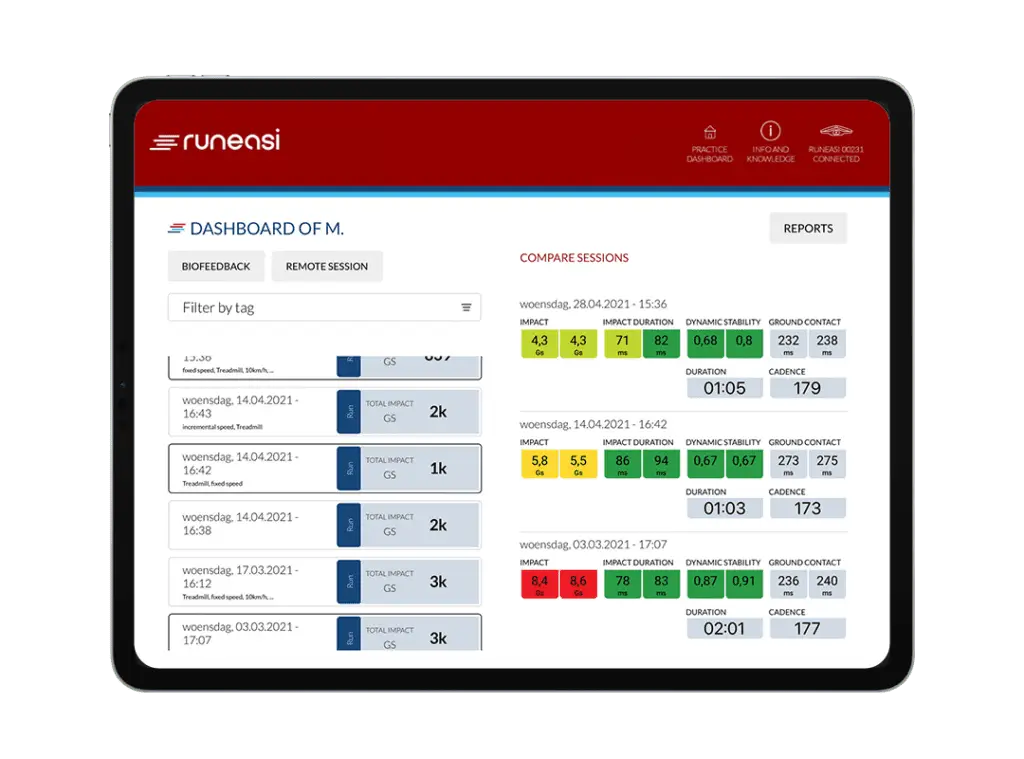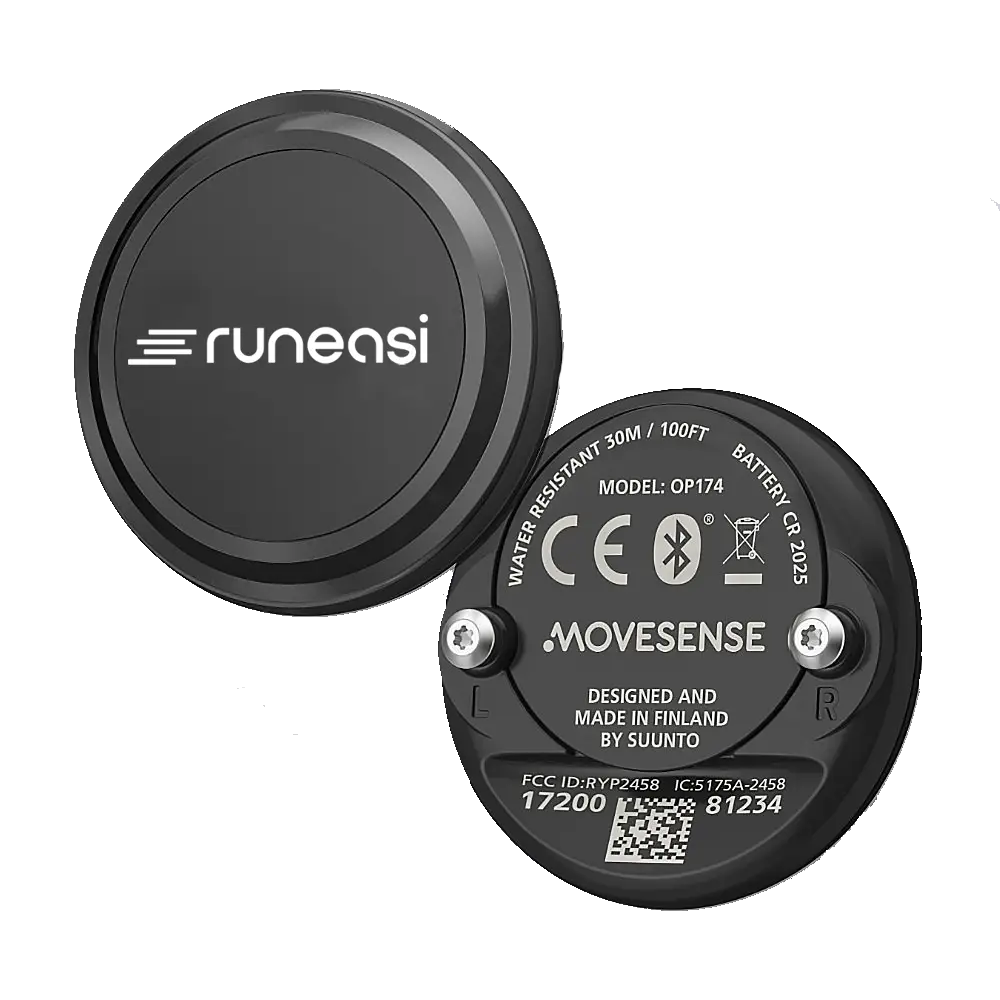Remote running analysis and monitoring
By Jeroen Baele – Groepspraktijk Tille
We’re well aware that running injuries are prevalent and can significantly impede progress, often requiring substantial time for recovery. These injuries are influenced by various factors, with running mechanics playing a crucial role. Capturing someone’s loading pattern during running can greatly assist in optimizing a training plan.
Despite the wealth of research conducted in advanced laboratories, biomechanical data from daily training can provide clinicians with invaluable insights. This is precisely why we present a case study from Jeroen Baele of Groepspraktijk Tille, illustrating how remote biomechanical data from daily training sessions is utilized to monitor progress and tailor training regimens accordingly.
Background story of the runner
A middle-aged runner experienced a proximal hamstring injury on her right side, which persisted for several months. The injury occurred during marathon training using an online app, leading to the need for careful management by Jeroen. Balancing training and recovery for the upcoming marathon while addressing the overuse injury posed a significant challenge. As the rehabilitation process prolonged, she began to encounter patellofemoral pain issues in her right knee.

After numerous flare-ups, she did her Runeasi assessment in the summer of 2023, revealing areas of weakness. It became apparent that her quality score had slightly declined, dropping from 55% to 43% following her injury. This assessment served as a valuable starting point to monitor her progress in rehabilitation.
Runeasi monitoring during her daily training
Over 3 months, a total of 37 running sessions were recorded, including both easy runs and interval sessions. This dataset provides Jeroen with a solid foundation for pinpointing insights and identifying weaknesses in her daily training regimen. Now, let’s delve further into some of the key insights from this extensive dataset.
1. Clear progress in her easy runs

We noticed she’s been doing better in her easy runs. Her running quality score has improved from around 40% to about 60%. The biggest change is in left-to-right symmetry, going from 40-50% to 60-70%. This matches up with her feeling better too. She went from a bit of pain, rated 2 out of 10, to feeling no pain at all, a 0 out of 10.
“Remarkably, we were able to alleviate her pain without resorting to cues. Attempts to adjust her running mechanics through cueing proved ineffective, prompting us to adopt a different approach. Throughout her training period, we monitored her running mechanics across various sessions conducted at home.” – Jeroen
Throughout this period, her focus primarily centered on increasing the load capacity of her hamstrings and improving her dynamic stability. Notably, efforts to improve her running technique using various cues did not improve her running quality.
2. Shift in rhythm and impact load

Moreover, we noticed a shift in her running cadence, the number of steps taken per minute, during both easy runs and interval sessions. This shift appears closely linked to the magnitude of impact her body experiences with each step. Particularly notable is the improvement in her right leg, previously injured, from experiencing 5-6 G to 3.5 G impact.
Reducing impact by 2-3 G can significantly impact training outcomes. With this decrease, she can sustain running for 30 to 40% longer while maintaining the same cumulative impact, enabling increased training volume without additional stress on the body.
The change in cadence seems to have occurred naturally, likely influenced by increased training during that period and adherence to her exercise program. This underscores the notion that altering the running technique isn’t always necessary to achieve improvements.
How did this change her rehabilitation?
Seeing the outcomes and progress throughout 2 to 3 months was incredibly motivating for her. When dealing with an injury, improvements in pain levels are often the primary indicators of progress. However, having objective results allowed her to tangibly witness how her exercises were impacting her movement efficiency. This not only provided validation but also served as a source of motivation.

Provided by Jeroen Baele
Jeroen is a sports physiotherapist. He has a passion for basketball and a background in high-level youth basketball. His interest in exercise physiology, particularly running, stems from his youth. He sees runeasi as a valuable tool for objectively assessing running technique, complementing his coaching cues. He adopts a scientific approach, emphasizing the importance of measurement for progress. Currently, he works at the Tille group practice, coaches at Avanti Brugge basketball club, and is employed at Cosmogroup, focusing on multi-omics analyses.







